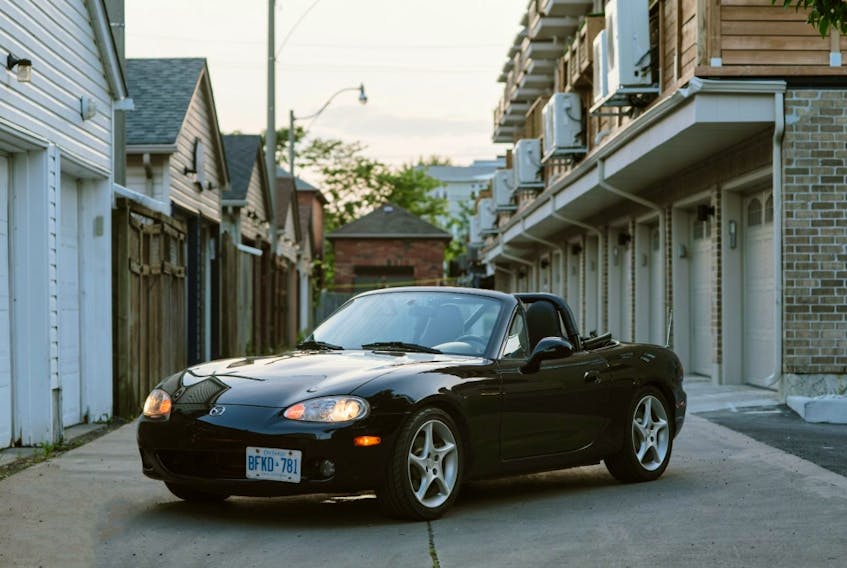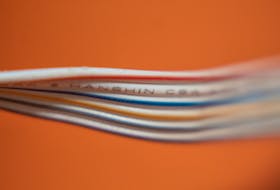There’s something deeply, privately sad about being sucked in and disappointed by aspirational products, those shiny things that promise a new, freer, easier, cooler lifestyle: expensive athleisure wear, a wifi-enabled juicer, an impossible-to-buy Supreme hoodie.
Sports cars are firmly in this lofty, spark-joy category; they look so good on Instagram, but are somewhat impractical day-to-day. These cars are supposed to be fun, but increasingly they feel like they’re simply not made for this world and the realities of driving. They’re too fast, too heavy, too serious, too expensive, too stiff and just too much.
A few seconds at full throttle is all the fun you can legally have in most sports cars. Eight or 10 seconds flat out is enough to get you convicted for stunt driving in Nova Scotia. At 50 km/h over the limit, you face a $2,422 fine, six demerit points, and an immediate seven-day roadside licence suspension.
It’s not the law that’s the issue here; it’s the cars.
A friend drives a 2003 Mazda Miata (aka MX-5). It’s the NB model, the second generation of Mazda’s little sports car that could. It’s a cult classic, universally beloved by car geeks. Bravely, he let me take his baby for a spin recently and it was useful reminder of how fun driving (slowly) can be.
My legs brush against the non-adjustable steering wheel. Reaching my arm down the side of the door my fingers nearly touch the ground.
Rounding the first city block the old Mazda turns so fast it’s shocking. The body rolls through turns, but the suspension — which is tweaked with aftermarket parts — is comfortable even at low speeds, which is unheard of in nearly every modern sports car. There’s lot of give in the Miata’s rear suspension as it compresses coming down off a speed bump. Mash the throttle and the little four-cylinder engine spits out around 140 horsepower. It makes a racket like six raccoons fighting in a garbage can. We’re doing just 40 km/h but it feels like double that and I’ve got a perma-grin. This car offers pure joy without the real possibility of jail time.

The old Mazda makes even the new Toyota 86/Subaru BR-Z twins feel a bit tame and aloof. The Miata’s stubby gearshift is just as solid and mechanical as the lovely $100,000 Porsche 718 Spyder. The BMW M2 Competition is one of the best new sports cars, at any price, but this old and slow Miata is probably more usable, more of the time on real roads. The Porsche 911, the Mercedes-AMG GT, the Jaguar F-Type, the Mustang, the Corvette — they all feel a bit ponderous in comparison.
Sports cars have jumped the shark with 500, 600, 700 (!) horsepower under the hood — it’s exciting but wasted on real roads. Such steroidal power figures necessitate big tires and stiff suspension, which makes cars heavy and kind of inert at lower speeds. To make them come alive you need to fly into the Danger Zone: pull 1G of cornering force and get right to the knife-edge limit of grip. If you’re doing that on the road, I don’t want to be anywhere near you.
In the slowing new-vehicle market, sports car sales have been hit especially hard and it’s tempting to think it’s because they seem just a little bit out of touch. Compared to this point last year, muscle car sales in Canada are down approximately 850 units, according to GoodCarBadCar data. < http://www.goodcarbadcar.net/canada-muscle-car-sales-figures/ > Sales of high-end European sports cars are all in the red too (with the exception of the Mercedes-AMG GT). < https://www.goodcarbadcar.net/canada-premium-sports-car-sales-figures/ >
Sports cars are due for a reality check. Automakers need to have a good hard think about what makes a car fun out here in the real world or they’re going to lose a whole generation of gearheads. They will scrape and save for the car of their dreams, but if it’s more pain than pleasure, best case they buy an old Mazda, worst case they give up on cars and try to become Twitch streamers.
Many years ago, a German automotive engineer who’d just launched the then-new Porsche 911 Turbo essentially told me that lap times are fun. This idea, that you can measure a car’s fun by how quickly it goes from A to B, is absurdly rational for such a frivolous, emotional product as a sports car. Besides, in the real world, A-to-B times are dictated by traffic and construction.
Not everyone can afford to (or wants to) spend their weekends at track days. Sports cars need to thrill you even in our modern hellscape of bad roads and worse traffic. Good news: it is possible. Driving my friend’s old Mazda proved it.
A car like that could never be made now like it was in 1999, safety regulations make it impossible. So there’s no point being nostalgic. Instead, look forward: electrically powered turbo- and superchargers, mass produced carbon-fibre, 3d magnesium printing, in-line electric motors and who knows what else. There’s so much promising technology out there that we’ve yet to see in mainstream sports cars.
When expensive things — like wifi-enabled juicers or Supreme hoodies — fail to provide the promised quality-of-life improvements they end up unused, gathering dust and regret.
Ferry Porsche said the last car ever built will be a sports car, but that day may come sooner than he imagined unless sports cars rethink how to make good on their promise.









